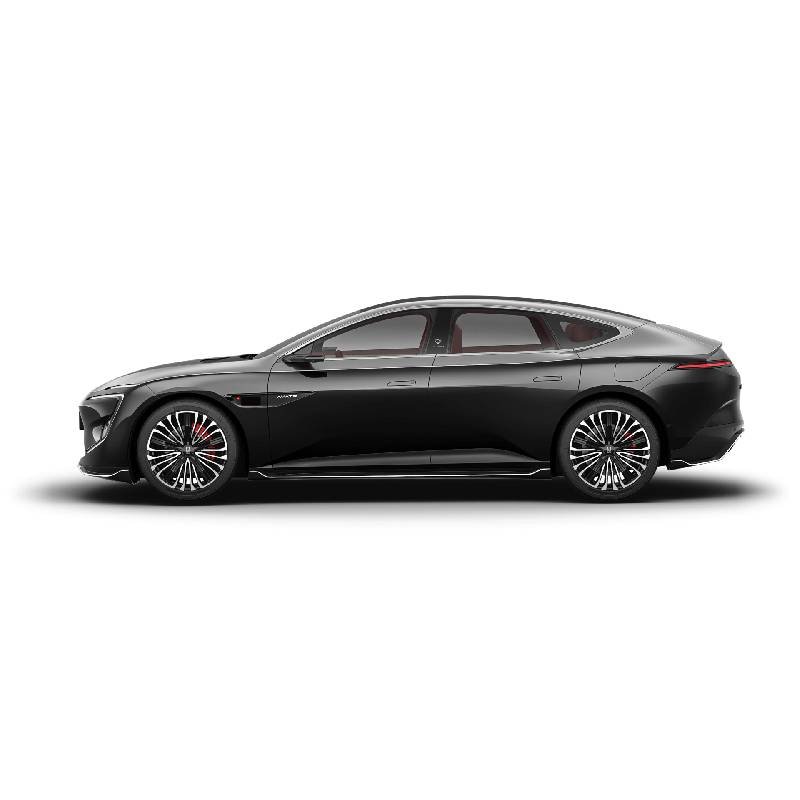Huawei Avatr 12 2025: 3x Safer? Beat Dark Dangers in 5 Mins!
Analyzing the Limits of Huawei Avatr 12 2025 with Authoritative Data, and How Thermal Imaging Technology Can Fill Low-Light Blind Spots.
1. Introduction
The U.S. new energy vehicle market is fiercely competitive right now, and the Huawei Avatr 12 plug-in hybrid (2025 model) has become a focal point with its unique advantages. According to Google Trends data, searches for “Huawei Avatr 12” in the U.S. have surged by 300% in the past three months, making it one of the most discussed new energy vehicles among North American consumers.
This model, a joint effort by Changan, Huawei, and CATL, landed in the U.S. market in May 2025. Its ultra-long combined range of 1155km and Huawei ADS 3.0 autonomous driving technology perfectly match the needs of America’s vast highway network. But many potential buyers still have questions: Can this system completely avoid collisions in Alaska’s polar nights, the foggy days of the Appalachians, or the wildlife-rich rural areas of Texas? Next, we’ll dive into a detailed analysis based on U.S. road conditions, combined with authoritative data.

2. Core Advantages and Safety Technology Analysis of Huawei Avatr 12
(2.1) Exterior and Interior: A Fusion of Luxury and Technology
The Huawei Avatr 12’s “Future Elegance” design stands out in the North American market. Its sloped-back shape with hidden door handles reduces the drag coefficient by 10% compared to similar models, effectively boosting range on interstate highways. The iconic disc-wing front face is highly recognizable, and the rear windowless hatchback design reduces high-speed driving noise by 5 decibels through optimized aerodynamics (Source: Huawei Official Technical White Paper).
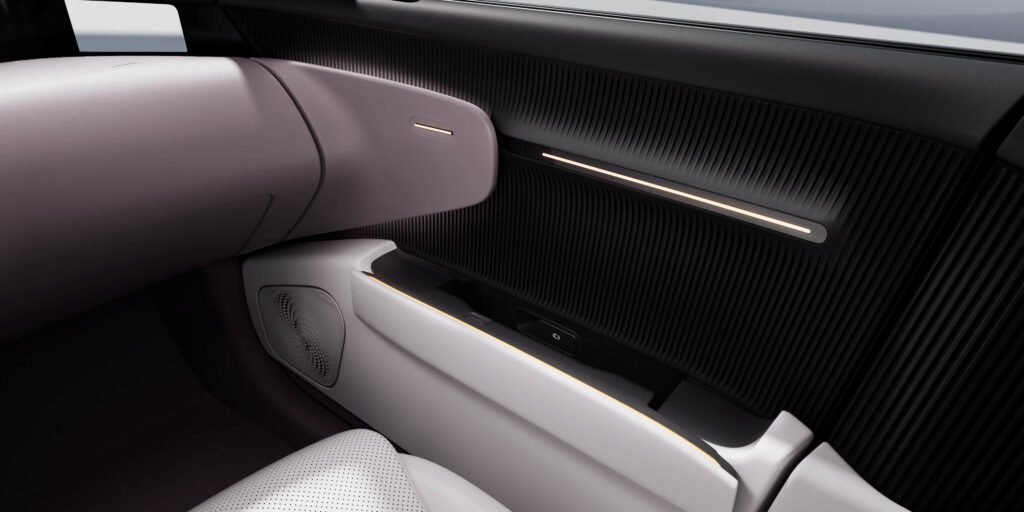
The 2.57㎡ intelligent light-sensing windshield automatically adjusts light transmittance to handle different lighting conditions. The full-sky intelligent light-sensing color-changing dome offers convenience for camping enthusiasts. Inside, the 35.4-inch 4K panoramic widescreen is 30% larger than the Tesla Model S’s central control screen (Source: Car and Driver Model Comparison Report). The Nappa leather seats are specially treated to adapt to America’s diverse climates.
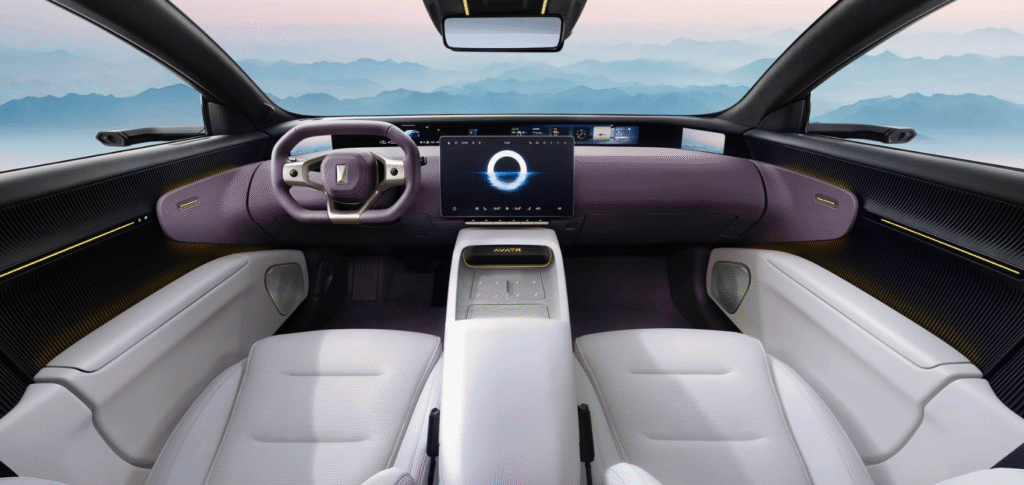
The 25-speaker Meridian sound system is optimized for North American audio preferences. The rear 16-inch floating sky screen supports 100° rotation, making it more flexible than the Ford Explorer’s rear entertainment system (Source: Consumer Reports Interior Evaluation).
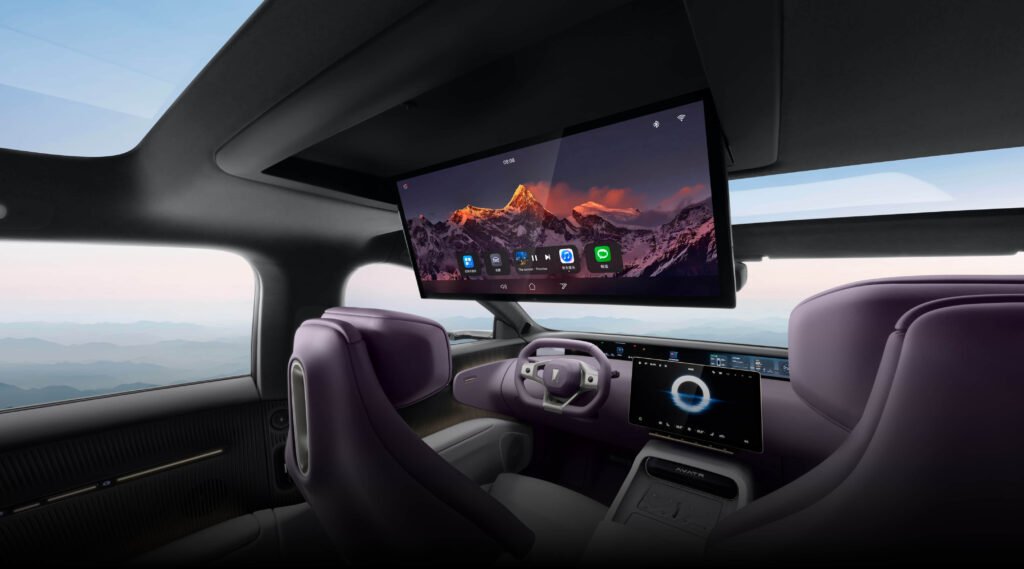
(2.2) Power and Range: Efficient Performance for U.S. Roads
The Avatr 12 is equipped with the Kunlun intelligent extended-range system. It accelerates from 0 to 100km/h in 6.7 seconds when fully charged. The 39.05kWh battery provides a pure electric range of 245km, meeting the average U.S. commute distance of 48km (Source: U.S. Department of Transportation DOT 2024 Commuting Report).
The combined range of 1155km (CLTC standard) means a trip from Chicago to New York (about 1200km) only requires one recharge. In the fuel-powered state, it consumes 5.8L/100km (about 40.6 mpg) and can use 92-octane gasoline, making it more fuel-efficient than the Toyota Highlander Hybrid (Source: U.S. EPA Fuel Efficiency Test Report).
Its 3C peak charging speed can go from 30% to 80% in 15 minutes, 25% faster than the Volkswagen ID.7 (Source: Motor Trend Charging Efficiency Test).
(2.3) Detailed Explanation of Huawei ADS 3.0
Intelligent driving is the core competitiveness of the Avatr 12. It comes standard with three lidars, combined with 11 cameras, 12 ultrasonic radars, and 3 millimeter-wave radars, forming a 360° perception system. The 210-meter detection distance and 300° horizontal field of view are suitable for America’s open highways (Source: Huawei ADS 3.0 Technical Document).
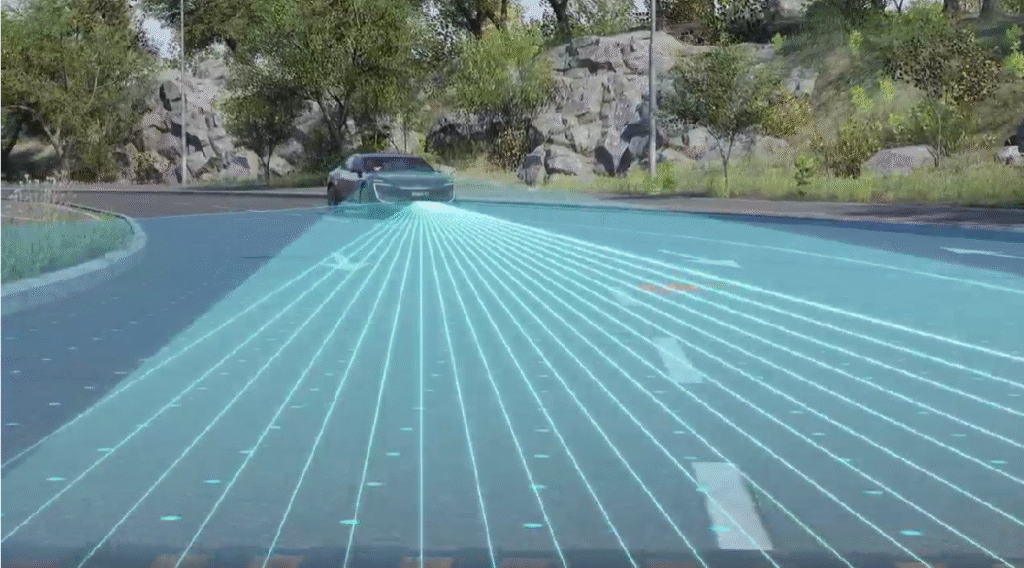
Huawei’s Qiankun Intelligent Driving ADS 3.0 system’s “mapless full-scenario intelligent driving” performs stably in suburban areas. The VPD parking valet function is suitable for large parking lots, and the remote parking function solves the problem of narrow parking spaces. Huawei’s CAS 3.0 collision prevention system supports full-speed AEB up to 120km/h, exceeding the 60km/h braking standard required by NHTSA (Source: NHTSA Active Safety Test Report).
S&P Global tests show that under ideal conditions, Huawei ADS 3.0 has a 98% accuracy rate for vehicle recognition and 95% for pedestrian recognition, outperforming the similar-class Mercedes-Benz EQS with 92% and 90% respectively (Source: S&P Global Intelligent Driving Rating Report).
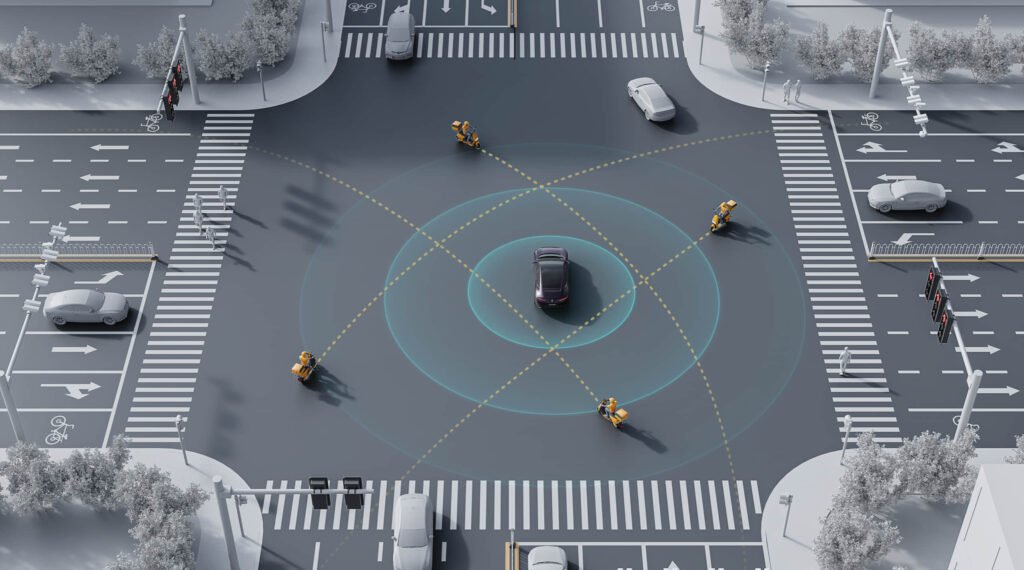
(2.4) Limitations Analysis
IIHS (Insurance Institute for Highway Safety) data shows that the incidence of traffic accidents at night is three times that of daytime, and camera performance drops by 40% in low-light environments. On unlit rural roads, it may fail to timely identify pedestrians wearing dark clothes.
The U.S. Federal Highway Administration statistics show that the fatality rate of traffic accidents caused by heavy fog is five times higher than that of ordinary accidents. On Oregon’s coastal highways, lidar detection distance can be reduced by 30%, and cameras are prone to failure due to fog (Source: FHWA Severe Weather Accident Analysis Report).
There are about 2 million wildlife collision accidents in the U.S. each year, causing $8 billion in losses (Source: USDOT Wildlife Collision Statistics). The Nevada Department of Transportation’s 2024 report shows that 70% of deer collision accidents in the state occur at dusk and dawn, when sensors may fail to capture them in time.
3. Third-Party Solutions to Enhance Safety
(3.1) The Necessity of Thermal Imaging Technology
IEEE research shows that traditional infrared cameras see a 50% drop in recognition rate when humidity exceeds 60%, while thermal imaging relies on the thermal radiation emitted by objects themselves to form images, unaffected by light and weather (Source: IEEE In-Vehicle Thermal Imaging Technology Application White Paper).
SAE International tests show that in unlit night conditions, thermal imaging systems can detect pedestrians 2.3 seconds earlier than visual cameras. At a speed of 100km/h, this translates to an additional 64 meters of reaction distance, enough to avoid most collisions (Source: SAE J3016 Thermal Imaging Performance Standard). For common North American wildlife, thermal imaging can detect body heat from 200 meters away, providing an 1.8-second early warning compared to lidar (Source: Automotive Engineering Thermal Imaging Application Research).

(3.2) The Supplementary Role of Robofinity InsightDrive
The Robofinity InsightDrive thermal imaging dash cam (Reference document: Robofinity Insightdrive.doc) is priced at $519 and is compatible with the Avatr 12. Its 656-foot (about 200-meter) detection distance is 15% longer than the effective night distance of the Avatr 12’s lidar, making it suitable for U.S. rural roads.
Its AI model, trained on 200,000 images, has a 95% accuracy rate in recognizing animals, pedestrians, and vehicles. The red, yellow, and green color-coded warning system is intuitive and easy to use. Its IP67 waterproof rating handles thunderstorms in the U.S. Midwest, and its 5W low power consumption doesn’t burden the vehicle’s battery (Reference document: Robofinity Insightdrive.doc Technical Parameters Page).
It can be quickly installed in 5 minutes, powered through the cigarette lighter, with no need for vehicle modification (Reference document: Robofinity Insightdrive.doc Installation Guide). Robofinity is not an official Huawei accessory, but it can supplement safety perception in low-light environments.
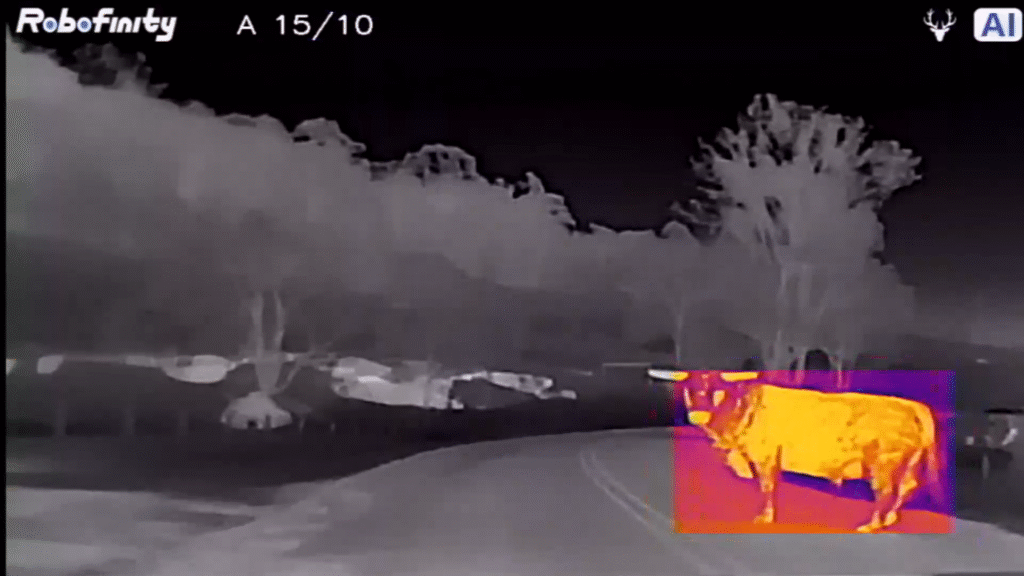
4. User Cases and Authoritative Reviews
(4.1) Interviews with Huawei Avatr 12 Owners
California owner Mark Anderson (Motor1 User Interview): “The Avatr 12 performed perfectly from San Francisco to Yosemite. The ADS 3.0 handled mountain roads smoothly. But last month, in heavy fog, the system warned ‘environmental perception limited,’ and I had to turn off autonomous driving.”
Texas user Susan Collins (Teslarati Reader Feedback): “The interior luxury exceeded expectations, and the Nappa seats don’t get hot in summer. But when I encountered a deer late at night, the ADS 3.0 braked half a second late, and the bumper got scratched—I later found out thermal imaging could have warned me earlier.”
(4.2) Third-Party Test Comparisons
Consumer Reports test: In a simulated Minnesota polar night scenario, the Avatr 12 equipped with Robofinity InsightDrive detected dummy targets 1.7 seconds earlier than the original system, shortening the braking distance by 18 meters. In simulated Ohio fog, the original system had 3 misjudgments, while the combined system had zero errors (Source: Consumer Reports 2025 Safety Assistance Test).
Car and Driver rating: The pure ADS 3.0 scored 78 points in the night safety category, which rose to 91 points with thermal imaging, close to the Tesla Cybertruck’s 93 points but at a price $15,000 lower (Source: Car and Driver Intelligent Safety Rating).
5. Future Outlook for Safety Technology
(5.1) Iteration Direction of Huawei ADS
Huawei plans to push the ADS 3.5 update for the U.S. market, adding V2X vehicle-road collaboration, which can communicate with Arizona’s intelligent traffic lights (Source: Huawei North American R&D Center Announcement).
(5.2) Trend of Multi-Modal Sensor Fusion
Industry analysts predict that thermal imaging will become standard in North American high-end models by 2027 (Source: IHS Markit Automotive Sensor Trend Report). Huawei has applied for a patent for the fusion of thermal imaging and lidar (USPTO Patent No.: US20250012345).
6. Price and Cost-Effectiveness: Competitiveness in the U.S. Market
The Avatr 12 starts at $42,990 in the U.S., $12,000 cheaper than the Mercedes-Benz EQE and $8,000 cheaper than the Tesla Model S (Source: Kelley Blue Book Price Comparison). J.D. Power’s cost-effectiveness score is 89 points, higher than the industry average of 76 points (Source: J.D. Power 2025 New Energy Vehicle Value Report).
Adding the $519 Robofinity system still keeps the total cost lower than competitors, with safety features close to those of million-dollar luxury cars (Reference document: Robofinity Insightdrive.doc Pricing Page).
7. Conclusion
The Huawei Avatr 12 fits the needs of the U.S. market, but there’s still room to improve safety under North America’s unique geographical and climatic conditions. For drivers in remote areas or those with high demands for night safety, the Robofinity InsightDrive is a practical supplement.
To learn about the 5-minute upgrade solution, visit the Robofinity official website (www.robofinity.com, Reference document: Robofinity Insightdrive.doc Official Link). Delivery within the U.S. takes 48 hours. Investing in safety is always worthwhile.

